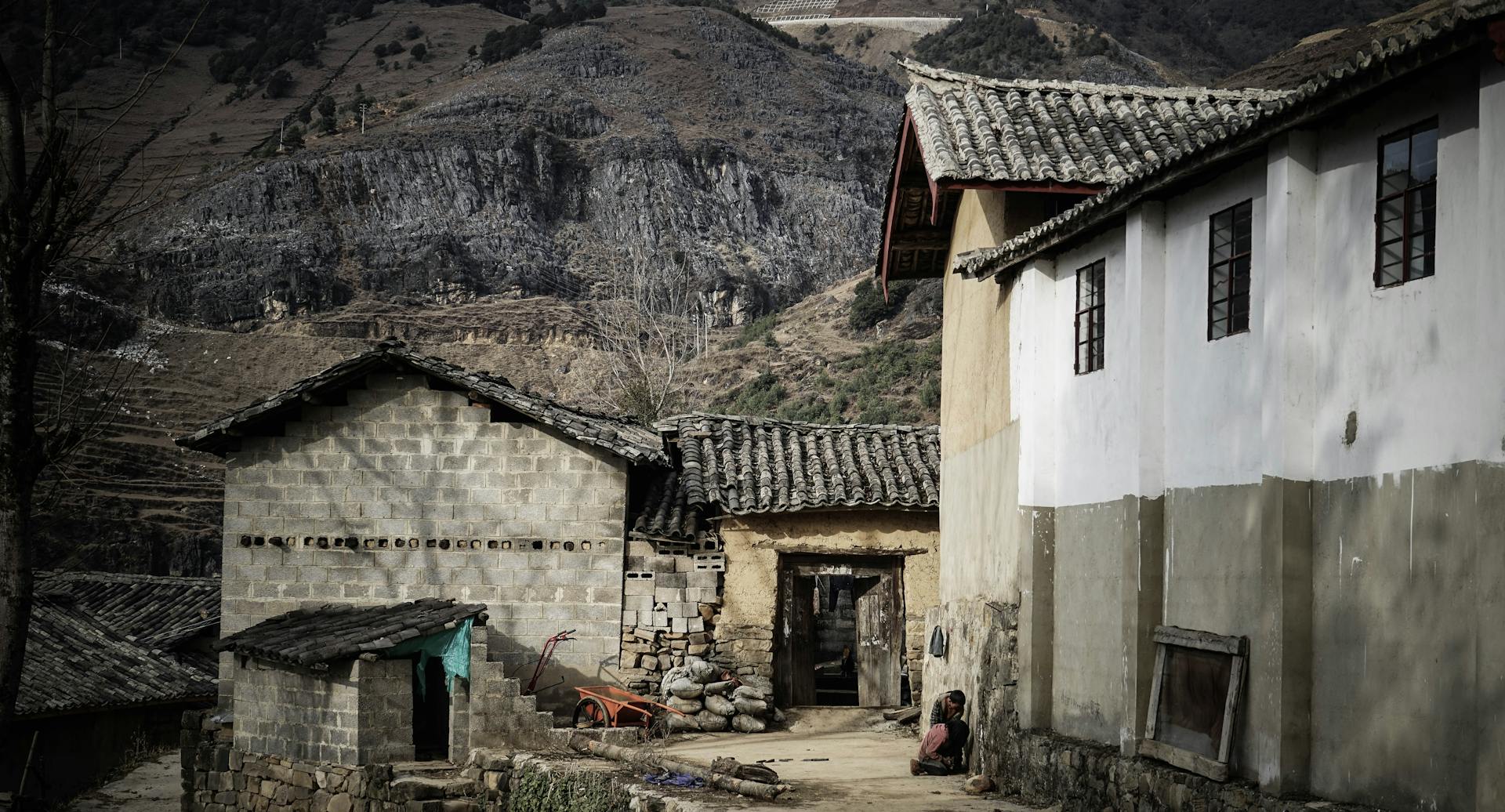As the sun rises over the vast landscapes of India, it illuminates not just the fields and homes but also a brighter future for countless villages grappling with the burdens of energy poverty. With over 300 million people still lacking reliable access to electricity, India faces a daunting energy crisis that stifles economic growth and hinders quality of life. In this context, the urgent need for sustainable solutions has never been clearer.
One such beacon of hope emerges in the form of solar-powered villages, where renewable energy is transforming lives and livelihoods. These innovative projects harness the abundant sunlight to provide clean, reliable electricity, empowering rural communities to break free from the shackles of dependence on traditional energy sources. The importance of renewable energy in rural development cannot be overstated, as it not only fosters economic opportunities but also enhances education, health, and overall quality of life. This article delves into the inspiring story of a solar-powered village in India, highlighting its journey toward sustainability and the profound impact it has made on its residents.
Background
Nestled in the heart of rural India, the village of Surya Nagar is a testament to resilience and innovation. With a population of approximately 1,200 residents, this vibrant community is located in the sun-drenched plains of Rajasthan. Historically, Surya Nagar has faced significant energy challenges, relying on erratic power supply from the national grid, which often left households in darkness for hours on end. The village’s limited access to electricity not only hindered daily activities but also stifled economic growth, education, and healthcare, leaving many families trapped in a cycle of poverty.
Recognizing the urgent need for sustainable energy solutions, a collaborative solar project was initiated in Surya Nagar. Funded by a combination of government grants, international NGOs, and private donations, the project aimed to install a comprehensive solar power system that would provide reliable electricity to every household. Key partners included local energy cooperatives, renewable energy organizations, and community leaders, all working together to empower the village. The primary objective was not only to enhance energy access but also to foster economic development, improve education, and promote health and well-being in the community.
The Implementation of Solar Power
The implementation of the solar power project in Surya Nagar marked a significant turning point for the village. A robust solar power system was installed, featuring over 200 solar panels and high-capacity storage batteries to ensure a steady supply of electricity, even during cloudy weather. Each household received a solar connection that powered essential lighting and appliances, transforming the way residents lived and worked.
The project timeline began with initial planning and community consultations in early 2022, leading to the installation phase, which was completed by the end of the year. Local government officials played a crucial role in facilitating the project, providing necessary permits and support. Additionally, NGOs offered training to local residents on system maintenance, ensuring sustainability and community ownership of the solar infrastructure.
Impact on Lives
The impact of solar power on the lives of Surya Nagar’s residents has been nothing short of transformative. With access to reliable electricity, families now enjoy well-lit homes, enabling them to extend productive hours into the evening. Basic appliances such as fans, refrigerators, and televisions have become common, enhancing comfort and quality of life.
Moreover, the improvements in education are profound. Children now have access to better study environments, with adequate lighting for homework and the ability to charge devices for online learning. The introduction of digital resources has opened up new avenues for knowledge and skill development, bridging the gap between rural and urban education.
Health benefits have also surged, as families can now refrigerate medicines and vaccines, ensuring proper storage and reducing waste. Improved sanitation practices, supported by better lighting and access to electric pumps for clean water, have significantly enhanced the overall health and hygiene of the community.
Impact on Livelihoods
The solar power initiative has also created a multitude of economic opportunities for the residents of Surya Nagar. Small businesses have flourished as shopkeepers can now operate extended hours and utilize electric appliances, from refrigerators for perishables to computers for bookkeeping. The availability of electricity has also fostered new entrepreneurial ventures, empowering individuals to explore diverse income-generating activities.
Case studies within the village highlight remarkable transformations. For instance, Rajesh, a local farmer, installed a solar-powered irrigation system, drastically improving his crop yield and enabling him to diversify into higher-value crops. This not only boosted his income but also enhanced food security for his family and the community.
Additionally, solar-powered equipment has revolutionized agricultural practices. Farmers can now operate electric tools and machinery, reducing labor costs and increasing efficiency. This shift has positioned Surya Nagar as a model for sustainable agriculture, showcasing the potential of renewable energy in enhancing rural livelihoods.
Community Involvement and Empowerment
Community involvement has been a cornerstone of the solar project’s success in Surya Nagar. Local residents were actively engaged throughout the process, from planning to implementation. Training programs enabled villagers to acquire skills for the maintenance and operation of the solar systems, fostering a sense of ownership and responsibility.
The formation of local energy cooperatives has further empowered the community. These cooperatives manage the solar infrastructure, ensuring its sustainability and reliability. By working together, residents have strengthened their bonds, promoting a culture of cooperation and collective action that extends beyond energy management.
Challenges and Solutions
Despite its successes, the project faced initial challenges during implementation. Technical difficulties, such as ensuring the solar systems met the unique needs of each household, required innovative solutions. Financial constraints also posed hurdles, particularly in securing upfront investments for infrastructure.
However, the resilience of the community and the support of stakeholders enabled them to overcome these obstacles. Regular workshops and community meetings facilitated open communication, allowing residents to voice concerns and collaborate on solutions. These experiences have imparted valuable lessons for future projects, emphasizing the importance of adaptability and community engagement in renewable energy initiatives.
Future Prospects
The solar-powered village of Surya Nagar stands as a model for replication across India and beyond. Its success has sparked interest from neighboring villages eager to implement similar projects, showcasing the scalability of solar solutions in rural settings. Innovations in solar technology continue to emerge, offering new possibilities for even greater efficiency and accessibility.
Government policies aimed at promoting renewable energy are essential for sustaining this momentum. By providing incentives for solar initiatives and supporting local energy cooperatives, policymakers can drive a broader transition toward sustainable energy solutions in rural communities.
Conclusion
The transformative effects of solar power in Surya Nagar illustrate the profound potential of renewable energy to change lives and uplift communities. As we look toward a future where energy independence becomes a reality for all, it is crucial to support similar initiatives that empower rural populations. Together, we can envision a sustainable future for rural India, where the sun not only brightens the day but also lights the path to prosperity and well-being.
Frequently Asked Questions (FAQs)
1. What is the significance of solar power in rural India?
Solar power is crucial in rural India as it provides a sustainable and reliable energy source to communities that often lack access to the national grid. It supports economic development, improves education and health outcomes, and enhances the overall quality of life for residents.
2. How does the solar power system work in Surya Nagar?
The solar power system in Surya Nagar consists of solar panels that capture sunlight and convert it into electricity. This electricity is stored in batteries, ensuring a continuous supply, even during cloudy weather. Each household is connected to this system, allowing residents to power lights, appliances, and other essential devices.
3. What are the main benefits of solar power for the residents?
The main benefits include improved access to electricity, which leads to enhanced daily living conditions, better educational opportunities for children, and improved health through access to refrigeration for medicines and clean water. Additionally, it creates economic opportunities through small businesses and improved agricultural practices.
4. How did the community get involved in the solar project?
Community involvement was a key component of the project. Residents participated in planning and implementation, received training for system maintenance, and formed local energy cooperatives to manage the solar infrastructure. This engagement fostered a sense of ownership and responsibility among villagers.
5. What challenges did Surya Nagar face during the implementation of the solar project?
The project faced several challenges, including technical difficulties in tailoring the solar systems to meet the specific needs of households and financial constraints in securing initial investments. However, these challenges were addressed through community collaboration and support from stakeholders.
6. Can this model of solar-powered villages be replicated in other areas?
Yes, the model of solar-powered villages like Surya Nagar can be replicated in other rural areas across India and beyond. Its success demonstrates the scalability of solar solutions and the potential for similar projects to transform communities facing energy poverty.
7. What role do government policies play in supporting renewable energy initiatives?
Government policies are vital in promoting renewable energy initiatives by providing incentives, funding, and support for local energy projects. By creating a favorable environment for solar energy, policymakers can drive wider adoption and ensure the sustainability of these initiatives in rural communities.


